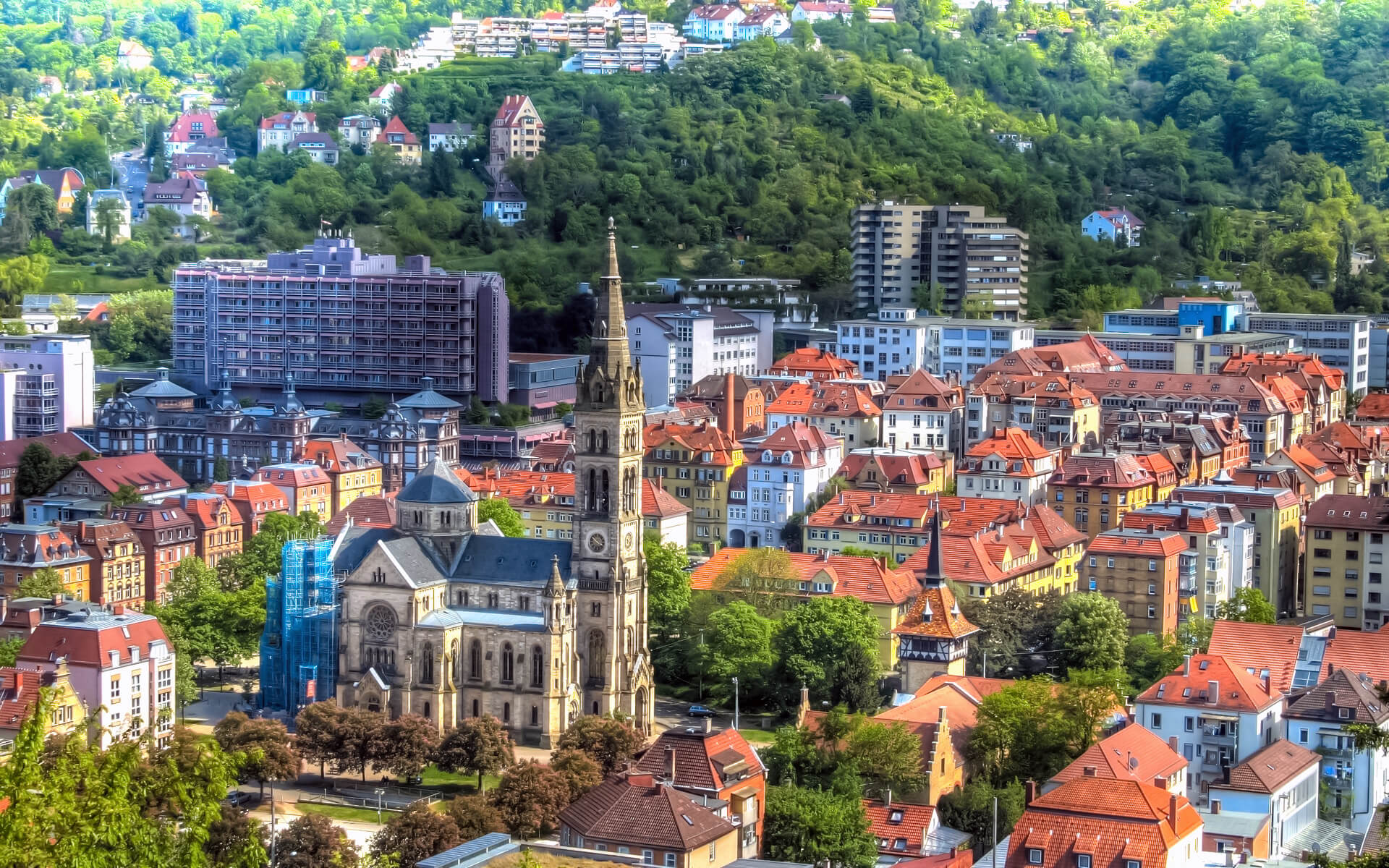Stuttgart is the capital and biggest city of Baden-Württemberg, a state in southwest Germany. Stuttgart, Germany’s sixth largest city, with a population of 600,068 (October 2014), while the broader Stuttgart Metropolitan Region has a population of 5.3 million (2008), ranking fourth in Germany behind the Rhine-Ruhr region, Berlin/Brandenburg, and Frankfurt/Rhine-Main. The city is located in the heart of a heavily populated region, and it is bordered by a ring of smaller towns. Stuttgart Region has a population of 2.7 million people.
Stuttgart is situated over a range of hills (many of which are vineyards), valleys, and parks, which is unique for a German city and sometimes surprises tourists who link the city with its industrial image as the “cradle of the car.” Stuttgart is a Stadtkreis, which is a form of self-governing urban county. It is also the seat of the Baden-Württemberg State Parliament and State Government, the Evangelical-Lutheran Church in Württemberg, and one of the two co-seats of the Roman Catholic Diocese of Rottenburg-Stuttgart.
Stuttgart was placed 21st in the world in Mercer’s 2015 liveability rankings, and 6th in Germany, behind top-ranked cities such as Frankfurt, Düsseldorf, and Munich. In 2009, the city was rated 11th internationally, second in Germany after Hamburg, and seventh in Europe out of 256 cities for economic and social innovation.
“Stuttgart provides more,” says the city’s tourist motto. In March 2008, the city launched a new logo and tagline, identifying itself as “Das neue Herz Europas,” as part of current ambitions to expand transportation ties to international infrastructure (as part of the Stuttgart 21 project) (“The new heart of Europe”). It bills itself as “Standort Zukunft,” or “Where Business Meets the Future” for business. Stuttgart was advertised to international investors in 2007 as “Germany’s creative powerhouse.” Stuttgart launched a new city logo in July 2010, with the goal of enticing more business people to remain in the city and take holidays in the surrounding region.
Stuttgart is known as the Schwabenmetropole (Swabian metropolis) due to its central position in Swabia and the Swabian dialect spoken by its original residents. The city’s name is pronounced Schtugert or Schtuagerd in that dialect. However, many non-Swabian Germans have immigrated to Stuttgart for economic reasons, and 40 percent of Stuttgart’s citizens, as well as 64 percent of the population under the age of five, are of immigrant origin.


